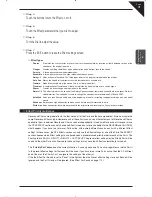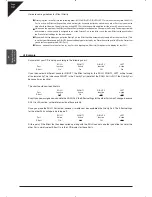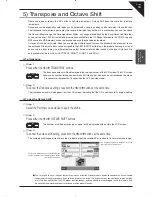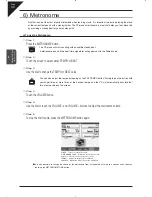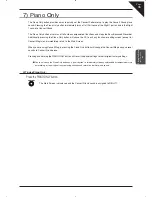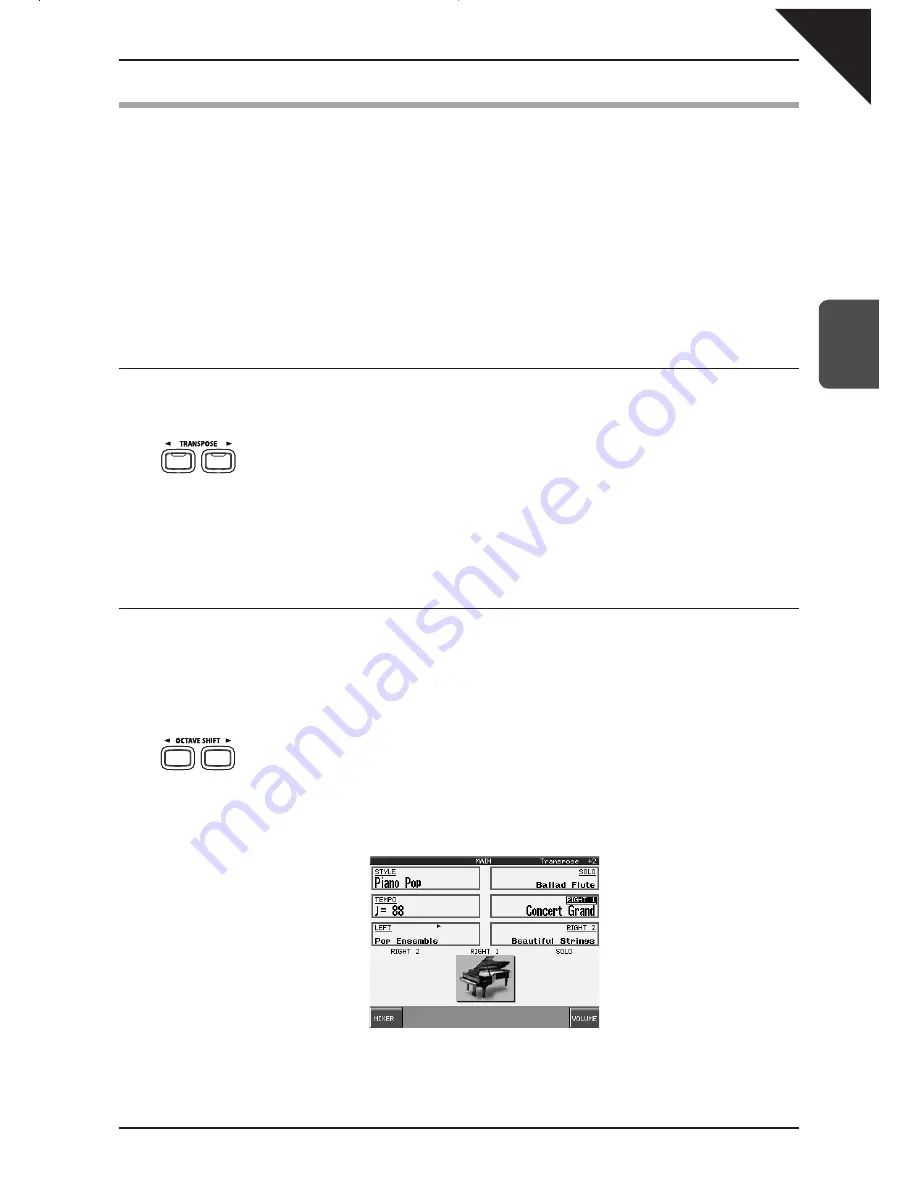
Page
33
3
Pla
ying the Piano
(Basic Controls)
5) Transpose and Octave Shift
Transpose raises or lowers the CP’s pitch in half-step increments. Octave Shift does the same but in octave
increments.
Transpose can be especially useful when you have learned a song in one key and have to play it in another key.
The transpose feature allows you to play the song in the original key, but hear it in another key. You can transpose
the Concert Magic songs, the Accompaniment Styles, any songs played back by the Easy/Advanced Recorder
and any of the over 1000 instrument and drum sounds available in the CP. Songs recorded to the CD-R Drive and
MP3s saved to USB memory cannot be transposed once they have been recorded.
Octave shift can be very useful when you are playing multiple sounds across the keyboard. You may want to use
the octave shift to adjust a bass sound assigned to the LEFT/SPLIT Part to play in the proper pitch range, or to set
one sound in a layer to play in a different octave so that it mixes well with other sounds in the layer. Octave shift is
only available for the four Parts: LEFT/SPLIT, RIGHT1, RIGHT 2, and SOLO.
¡
To Transpose:
Step 1
Press either the
W
or
X
TRANSPOSE buttons.
The transpose amount will be displayed in the top right corner of the LCD screen. The LCD screen
shows you a number telling you how many half steps up or down you have transposed the piano.
-5, for example, represents a transposition that is 5 half steps lower.
Step 2
To cancel the Transpose setting, press both the
W
and
X
buttons at the same time.
The transpose amount will disappear from the LCD screen, indicating that the CP is now back to its original setting.
¡
To use the Octave Shift:
Step 1
Select the Part that you would like to apply the shift to.
Step 2
Press either the
W
or
X
OCTAVE SHIFT buttons.
The number of shifted octaves (up or down) will be displayed with an
W
in the LCD screen.
Step 3
To cancel the octave shift setting, press both the
W
and
X
buttons at the same time.
The symbols will disappear from the screen, indicating that the selected Part is back to its normal octave range.
The Octave Shift amount is represented by the
number and direction of triangles shown beside
the relevant Part name.
The Transpose amount is displayed in the top
right corner of the LCD screen.
The Octave Shift has a range of four octaves in each direction. However, some on board sounds may have a limited
range in which they play properly. If you shift too far out of this range, the instrument may sound strange or may not play
at all. This has no affect on the CP’s proper function though, and you should feel encouraged to use this feature as a
means of getting interesting tonal variations out of the preset Sounds.
Содержание Concert Performer CP139
Страница 1: ...1 OVERVIEW OF CONTROLS 2 SOUNDS 3 STYLES 4 RECORDER 5 USB USAGE Quick Start Guide ...
Страница 2: ......
Страница 38: ...Page 38 USER NOTES ...
Страница 39: ...Page 39 ...
Страница 42: ...All descriptions and specifications in this manual are subject to change without notice ...
Страница 217: ...Page 177 11 Appendices User Notes ...
Страница 218: ......
Страница 219: ......













